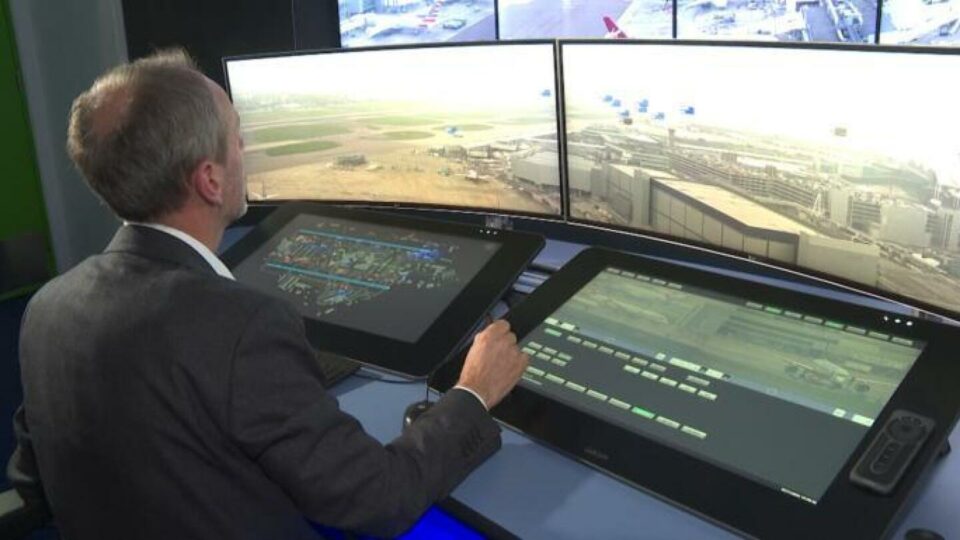“`html
Revolutionizing the Skies: Heathrow Airport Trials Cutting-Edge AI to Transform Air Traffic Control
Introduction to AI in Air Traffic Control
The aviation industry is on the cusp of a significant technological shift, with artificial intelligence (AI) emerging as a pivotal force in transforming air traffic control (ATC). Heathrow Airport, one of the busiest international airports in the world, has launched an initiative to trial AI-enhanced ATC solutions designed to elevate operational efficiency and passenger safety.
The Need for Innovation in Air Traffic Control
As air travel continues to grow exponentially, traditional air traffic management systems are struggling to cope with increasing demand. Some of the challenges include:
- Operational delays leading to an increase in flight cancellations.
- Airspace congestion affecting both airline schedules and passenger experience.
- Rising operational costs for airlines and airports alike.
- A growing need for sustainability in aviation operations.
How AI is Changing Air Traffic Management
AI technology offers innovative solutions to these ongoing challenges. At Heathrow Airport, AI is being integrated into various aspects of air traffic control:
Predictive Analytics
AI algorithms analyze vast amounts of historical data to predict traffic patterns, enabling ATC to manage flights more effectively. This often results in:
- Better resource allocation during peak hours.
- Minimized delays through proactive scheduling adjustments.
Real-time Data Processing
The ability of AI systems to process real-time data is vital for maintaining safety and efficiency. Applications include:
- Dynamic flight path adjustments considering current weather conditions.
- Real-time monitoring of aircraft movements to prevent potential conflicts.
Automation in Routine Tasks
AI can automate routine tasks traditionally performed by air traffic controllers, including:
- Generating flight plans.
- Managing ground traffic.
Heathrow’s AI Trial: Objectives and Implementation
Goals of the AI Initiative
Heathrow Airport aims to:
- Enhance air traffic safety.
- Reduce operational delays.
- Improve environmental sustainability by optimizing flight paths.
Implementation Phases
The trial of AI in ATC at Heathrow is being rolled out in phases:
- Phase 1: Data Collection & Analysis – Gathering historical flight data and identifying patterns.
- Phase 2: Algorithm Development – Creating AI models to address specific traffic scenarios.
- Phase 3: Real-time Testing – Implementing the AIs in live environments and gathering feedback.
Benefits of AI in Air Traffic Control
Implementing AI in ATC systems presents numerous benefits:
1. Increased Efficiency
AI helps optimize air traffic flows, leading to:
- Reduced flight delays.
- Enhanced overall airport operations.
2. Enhanced Safety
AI eliminates human error and assists controllers by:
- Providing alerts for potential hazards.
- Ensuring compliance with safety regulations seamlessly.
3. Environmental Benefits
AI utilization leads to eco-friendlier operations by:
- Implementing more efficient flight paths.
- Reducing fuel consumption during flights.
Practical Tips for Engaging with AI in Aviation
- Stay Informed:
Innovative Technology Enhances Airport Operations
Recent advancements in technology are set to revolutionize the way airports handle their extensive flight schedules. This innovation is specifically engineered to complement the work of air traffic controllers, providing an added layer of support to optimize ground and airborne aircraft operations.
Boosting Efficiency in Air Traffic Management
The primary objective of this cutting-edge system is to elevate both efficiency and safety within busy airport environments. By facilitating quicker decision-making processes regarding aircraft takeoffs, landings, and taxiing, the technology effectively alleviates some of the burden from air traffic controllers.
Collaborative Approach with Human Controllers
This advanced solution integrates seamlessly with existing human oversight, allowing for a hybrid model where technology enhances human expertise rather than replaces it. Such collaborative systems are increasingly crucial as worldwide flight numbers continue to rise dramatically.
The Growing Demand for Advanced Solutions
Statistics indicate that global air travel is expected to grow significantly over the next decade, with predictions suggesting that air passenger numbers could double by 2040. This underscores the pressing need for innovative approaches in managing increased flight activity safely and efficiently.


